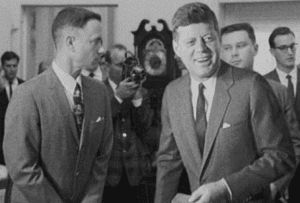Forrest Gump Effect, n.
/ˈfɒrɪst ɡʌmp ɪˈfɛkt/
Definition:
A narrative device in which a fictional character is placed into a real-world historical or contemporary context, often interacting with actual events, figures, or archival media, thereby creating the illusion that the character has meaningfully participated in or influenced real events.
Origin:

Named after the 1994 film Forrest Gump, in which the titular character, played by Tom Hanks, appears in a series of iconic historical moments—shaking hands with U.S. presidents, inspiring pop culture phenomena, and unwittingly shaping American history—despite being entirely fictional. The device is used to humorous, dramatic, or satirical effect, and often serves to reframe history through a personalized or outsider lens.
Examples:
• Forrest Gump (1994): Gump meets John F. Kennedy, teaches Elvis his dance moves, and speaks at a Vietnam War protest.
• F1 (2025): Brad Pitt and co-stars are digitally inserted into real Formula 1 race environments and events, blending fiction with actual sports footage in real time.
Usage:
“By dropping a fictional driver into the real F1 paddock, the filmmakers leaned hard into the Forrest Gump Effect—rewriting sports history in real time.”
Credit:
Definition coined by Paul Tien-Shih Lee.

